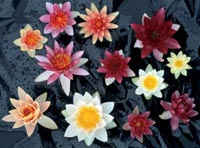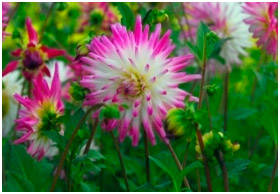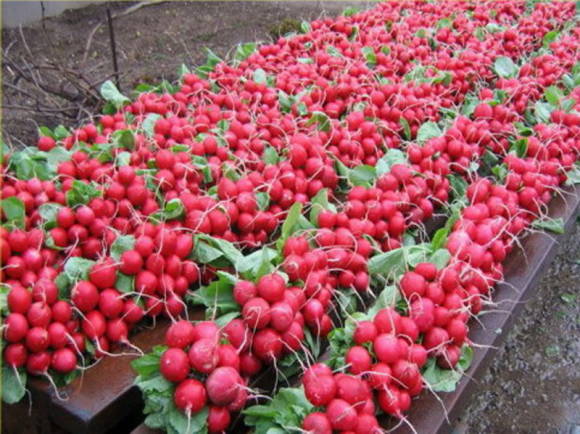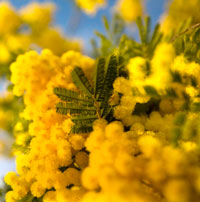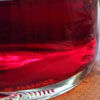Fragrant droppings
Scientific name of the genus anise(Anisum) comes from the Greek word anison - anise. Local names: ganizh, ganus (Ukrainian), sira (Kyrgyz), dzhire (Azerbaijani), anison (Armenian), anisuli (Georgian).
Anise ordinary (Anisumvulgare Gaertn.), As we call it, or Pimpinellaanisum L., as is often called in European countries, is an annual herb from the Celery family or, in the old way, Umbrella. Occasionally in the literature it is confused with the thigh plant.
The root system is pivotal and is located mainly at a depth of 20-30 cm. The stem is 50-70 cm high, erect, finely grooved, short pubescent, hollow, branching in the upper part. Basal leaves on long petioles, coarsely toothed, whole; stem - on short petioles, trifoliate with finger-incised leaves; the upper ones are sessile, three to five-part, with linear lobules. The flowers are small, white, collected in simple umbrellas, which in turn form a complex umbrella. The fruit is a two-seed (crocodile), ovoid or pear-shaped, slightly ribbed, greenish-gray or grayish-brown in color, with slight pubescence.

On the surface of the fruit, on each of its halves, there are five longitudinal thin ribs with hollows between them. In the wall of the fetus, on the outer, convex side, there are quite a lot (about 30) very small tubules containing essential oil; in addition, on the flat side of the fetus there are 2-3 or more large tubules, which also contain essential oil. Ripe fruits easily disintegrate into their constituent halves and, with poor-quality threshing, give a high percentage of crushed fruits, which, in turn, very quickly lose essential oil so valuable to us. The fruits of Russian and German origin are shorter and thicker, while those of Spanish and Italian origin are longer and darker.
Varieties
All major growing countries have their own varieties of anise. In Germany, "Thuringer anis" is grown, in Romania there is a variety "De Crangu", in Italy - "Albai", and in France, "Toutaine Anis" is widespread. The Russian State Register contains rather old varieties Alekseevskiy 1231 and Alekseevskiy 68. In addition, there are vegetable varieties of anise Blues, Magic Elixir, Umbrella, Moskovskiy Semko. But on the subject of the content of essential oil in fruits and their yield, information is often absent.
Child of an unknown country
The birthplace of the plant has not been reliably established. Some consider it Asia Minor, others - Egypt and the countries of the eastern Mediterranean. Nowadays, wild anise is found in Europe, Asia, North America, and wild anise grows only in Greece on the island of Chios.

It has been cultivated since ancient times. In the XII century it was cultivated in Spain, in the XVII century in England. In Russia, anise has been introduced into cultivation since 1830, and was grown mainly in three districts of the former Voronezh province. Before the First World War, the area under crops of this crop in the former Voronezh province reached 5160 hectares. In pre-revolutionary Russia, the fruits and essential oil of this plant were exported in large quantities abroad. Currently, anise is cultivated in many countries of the world: Spain, France, the Netherlands, Italy, Bulgaria, Turkey, Afghanistan, India, China, Japan, North America, Mexico and Argentina. In our country, the main areas of industrial crop cultivation are concentrated in the Belgorod and Voronezh regions. The northern border runs along the line Chernigov - Kursk - Voronezh - Saratov - Ulyanovsk. But this does not mean at all that it cannot be grown further north.
Cold-resistant heat lover
Paradoxical as it may sound, but this plant is both cold-resistant and thermophilic at the same time. Anise grows well in areas with sufficient sunlight on the southern and southeastern slopes.To obtain a stable harvest, the sum of positive temperatures during the growing season should be 2200-2400 ° C (this information can be found in agroclimatic reference books in any district library). It propagates by seeds that germinate at a temperature of +6 ... + 8 ° C (however, the optimum temperature is much higher - +20 ... + 25 ° C). Nevertheless, you should not rush to sow it, since germination in cold soil lasts a very long time, and the seedlings are affected by diseases. With a lack of moisture and low temperature during the germination of seeds, seedlings may appear in 25-30 days. At the same time, at a young age, plants tolerate a drop in air temperature to -7 ° C and soil temperature to -2 ° C.
With full swelling, the fruits of anise absorb 150-160% of their own weight of water, therefore, during this period they need sufficient moisture. Long and unstable germination occurs due to the fact that there are essential oil tubules around the embryo, which contain essential oil, which in turn inhibits this process. Scientifically speaking, it is a germination inhibitor.

Anise has a long growing season of 120-130 days. He experiences the greatest need for moisture during the period from stemming to flowering. During flowering, plants prefer dry weather, no precipitation. In this case, insects are active, which pollinate it and the setting, and accordingly the seed yield, will be higher.
You can sow it after any vegetable crops, except for representatives of the umbrella family (and there are a lot of them in the garden). Umbrellas bloom early in the morning, and by noon hours the maximum number of flowers is blooming. During the formation and maturation of seeds, warm and dry weather is required. Rainy and cold weather leads to inflorescence disease, poor fruit set and, accordingly, poor graininess of umbrellas, as well as to a decrease in the content of essential oil in the raw material, which is especially important in the conditions of the Moscow region. With waterlogged soil and strong winds, plants easily lodge.
Growing in a personal plot
It is possible to cultivate anise in a personal plot on any soils, with the exception of heavy, damp, clayey and saline soils. The predecessors can be legumes, vegetables and potatoes. The site should be dug to a depth of 22-25 cm a month before frost. In the fall, as weeds appear, they are destroyed with a hoe.
In the spring, when the soil dries up, the plot is leveled with a rake, then it is loosened to a depth of 4-5 cm, and again leveled and slightly compacted, leaving the top layer loosened.
Mineral fertilizers are best applied in the fall when digging a site at the rate of 20-25 g / m2 nitrogen and 25-30 g / m2 phosphorus fertilizers. Top dressing with nitrogen fertilizers is carried out during stalking at a dose of 10-15 g / m2.
For sowing, seeds are used for one to two years of storage. Otherwise, their germination is greatly reduced, and after five years they completely lose their viability.

Before sowing, anise seeds must be germinated for 5-7 days. To do this, they are abundantly moistened with warm water, raked into a pile (or wrapped in a cloth) and kept so until 3-5% of seeds have roots about 1 mm long. Then they are dried to a free-flowing state (but not dried at all!) And sown on a garden bed.
Sowing is carried out in spring to a depth of 3-4 cm with a row spacing of 35-45 cm. Continuous sowing with a row spacing of 15 cm is also possible. The choice of a sowing method depends on the fertility of the soil and the presence of rhizome and root-sucking weeds in it. The seeding rate is 1.8 g / m2.
To obtain powerful plants and a high yield, the soil must be kept in a loose state, and weeds must be dealt with in a timely manner. Timely and careful maintenance of crops during the period from sowing to the beginning of stemming, when weak anise plants are not able to control weeds, is crucial for the development of the crop.
Among other things, anise is a good honey plant.It is harvested when the seeds acquire a greenish color. Plants are cut at a height of 10-12 cm from the ground, laid out to dry under awnings. After 3-5 days, the seeds are threshed and cleaned from impurities.
Anise can be severely affected by pests and diseases. The most dangerous diseases are powdery mildew and especially cercosporosis, which is manifested by the gradual death of leaves starting from the lowest ones. To a lesser extent, rust, gray rot and sclerotinosis are manifested. Fungicides are used in industry, but on your site it is better to strive for Eco-farming. The key to success is buying healthy seeds, constantly moving anise from place to place on the site and burning plant residues if a disease is detected. And, of course, taking care of plant immunity with the help of modern and environmentally friendly plant growth regulators. It is also important not to overfeed the plants with nitrogen or sow too thickly.
About the properties of anise - in the article Anise oil, medicinal teas and fees.



